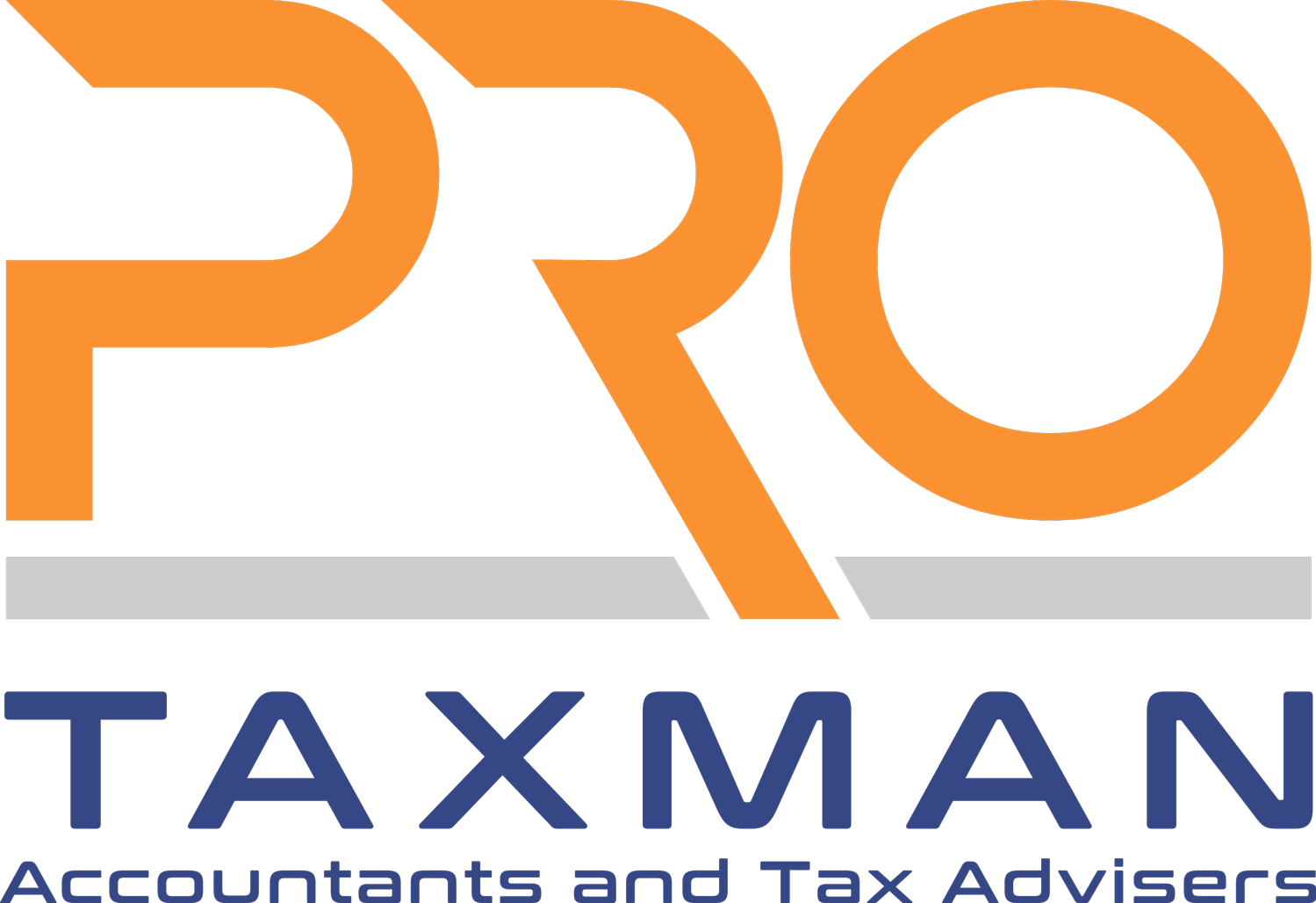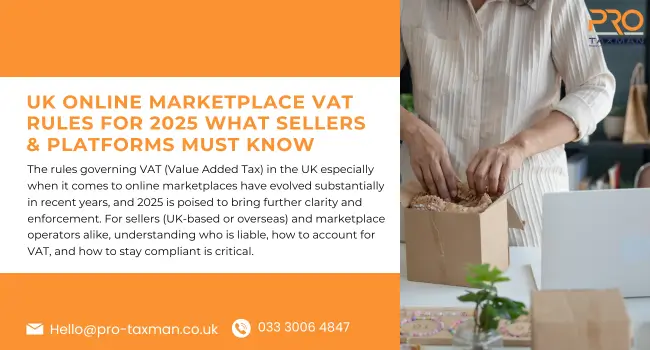The rules governing VAT (Value Added Tax) in the UK especially when it comes to online marketplaces have evolved substantially in recent years, and 2025 is poised to bring further clarity and enforcement. For sellers (UK-based or overseas) and marketplace operators alike, understanding who is liable, how to account for VAT, and how to stay compliant is critical.
In this post, we’ll walk through:
- Key definitions and thresholds
- VAT liability for marketplaces vs sellers
- Special rules for low-value consignments (the £135 rule)
- Recent guidance changes and HMRC expectations in 2025
- Practical steps for compliance
- Risks of non-compliance and enforcement trends
- Summary & recommendations
1. Key Definitions & Basics
Before diving into marketplace rules, let’s revisit some VAT fundamentals in the UK (as of 2025):
- VAT registration threshold: A UK business must register for VAT if its taxable turnover exceeds £90,000 (in a rolling 12 months) or if it expects to exceed that in the next 30 days.
- Rates of VAT: The standard rate is 20% for most goods and services. Some goods/services qualify for reduced (5%) or zero rates, depending on the nature of the item.
- Input vs Output VAT: When you’re VAT registered, you charge VAT on your sales (output VAT) and can reclaim VAT on purchases and expenses (input VAT) insofar as they relate to your taxable supplies.
These general rules set the stage for how VAT fits into online sales via marketplaces.
2. Marketplace vs Seller Liability: Who Collects & Remits VAT?
One of the trickiest areas in marketplace VAT is figuring out who is legally responsible for charging, collecting, and remitting VAT for a given transaction. The responsibility can shift depending on:
- Where the seller is “established” (UK or overseas)
- Where the goods are at the point of sale (in the UK or not)
- Value of the consignment / goods
- Type of customer (consumer or VAT-registered business)
Seller “Establishment” & Checks by Marketplaces
To decide VAT liability, marketplaces must assess whether a seller is “UK established” or “overseas.” The UK government has issued updated guidance (June 2025) requiring marketplaces to take “reasonable steps” to verify a seller’s establishment status.
Reasonable checks might include:
- Verifying a UK VAT registration number matches the seller’s name
- Checking whether the seller has a UK registered office or presence
- Looking at director addresses, company registration records, financial information
- Documenting evidence of checks (in case HMRC audits)
If the marketplace fails to apply the correct VAT liability (e.g. misclassifies a seller), HMRC can assess the marketplace for under-declared VAT unless the marketplace can demonstrate it carried out reasonable steps.
General Liability Rules (Goods Inside UK / Outside UK)
Here is a simplified breakdown:
1 Scenario
- Overseas seller
Goods located in UK at point of sale
- The marketplace is liable for VAT on goods sold of any value if the goods are within the UK and sold via the marketplace.
Goods outside UK at point of sale
- If goods are outside the UK and the consignment value is ≤ £135, the marketplace must charge VAT at point of sale (unless buyer is a VAT-registered business)
2 Scenario
- UK-based seller
Goods located in UK at point of sale
- The seller is liable for VAT (as per usual VAT rules)
Goods outside UK at point of sale
- If a UK seller sells goods located outside the UK via the marketplace to UK customers, the marketplace may still have a role in VAT collection (depending on the rules)
A few further clarifications:
- Deemed supply / zero-rated supply to marketplace: When goods are already in the UK and sold by an overseas seller, the overseas seller is treated as making a zero-rated supply (deemed supply) to the marketplace, and the marketplace handles the onward supply (with VAT) to the end consumer.
- Business customers & reverse charge: If a marketplace sells goods valued at ≤ £135 to a VAT-registered UK business, the marketplace doesn’t need to charge VAT; instead, the business customer accounts for VAT via reverse charge.
- Consignments > £135: The normal import VAT and customs rules apply; and the marketplace or seller must adjust if the value shifts above the threshold.
In short: for overseas sellers with goods already in the UK, marketplaces carry VAT responsibility. For goods shipped from abroad and valued ≤ £135, marketplaces generally must collect VAT at point of sale (unless B2B). For higher value consignments, standard import rules take effect.
3. The £135 Low-Value Consignment Rule & Recent Review
One of the most-important rules affecting online marketplaces is the so-called “£135 threshold” (often referred to as the low-value consignment rule).
What Is the £135 Rule?
- If a consignment (i.e. the bundle or package) has a value of £135 or less (goods only, excluding separate shipping or insurance charges) and is sold to a customer in Great Britain (England, Scotland, Wales), then the marketplace is required to charge and collect UK VAT at the point of sale (i.e. before import) rather than letting the buyer pay VAT upon delivery.
- If the buyer is a VAT-registered business and provides a valid VAT number, the marketplace need not charge VAT; the business will use the reverse charge mechanism.
- If the consignment value exceeds £135, “normal import VAT and customs rules” apply.
Review & Proposed Changes (2025)
In April 2025, HMRC announced plans to review the marketplace liability rules for import consignments ≤ £135, which were introduced in January 2021.
While no formal changes have yet been confirmed at the time of writing, this review signals that the current regime may be adjusted. Sellers and marketplaces should keep an eye out for updates.
4. 2025 Updates & HMRC Emphasis
Here are some of the newer developments and signals from HMRC in 2025 that sellers and marketplaces should note:
- New guidance for marketplace operators (20 June 2025): HMRC formalized their expectations around the checks marketplaces must carry out, how to decide seller establishment, and documentation.
- Marketplace liability for UK-located goods: HMRC confirmed that marketplaces are liable for VAT on goods of any value if those goods are located in the UK at the point of sale and sold by overseas sellers.
- Capital expenditure & CGS rule changes: In parallel, the government is proposing changes to how capital goods (e.g. computer equipment) and capital expenditure thresholds are handled under the Capital Goods Scheme. While not directly about marketplace VAT, these changes may reduce administrative burdens for many businesses.
- Platform data sharing: Digital platforms (including marketplaces) are required to share sales data and certain user info with HMRC. For example, if you listed ≥ 30 items or made approx. £1,700 in sales through a platform, that platform must share your data.
These developments point to increased scrutiny, regulatory expectations, and the importance of robust record-keeping.
5. Practical Steps for Compliance (For Sellers & Marketplaces)
Here are action points and best practices to help you stay VAT-compliant in the evolving 2025 landscape.
For Marketplace Operators
- Implement seller checks: Put in place systems to collect information from sellers (e.g. country, VAT number, business address) and verify whether they are UK-established or overseas. Document the checks as “reasonable steps.
- VAT calculation module: Ensure your marketplace software can compute VAT correctly (for goods inside UK, low value import consignments, etc.).
- Data retention & record-keeping: Keep full VAT records (invoices, transaction logs, seller documents) for at least six years.
- Interface with import systems: For consignments > £135 or for high-value goods crossing borders, integrate or coordinate with customs / import VAT workflows.
- Onboarding & education: Help sellers understand when they must register, or when marketplace will handle VAT obligations.
- Respond to HMRC audits: Be ready to present your evidence of having taken “reasonable steps” to classify sellers and apply VAT correctly.
For Sellers (UK-based or Overseas)
- Know your establishment status: Be clear whether you are considered “UK established” or an “overseas seller.”
- Register for UK VAT if required: If your UK taxable turnover exceeds the threshold (or if you store inventory in the UK), you must register.
- Monitor low-value consignments: Understand which of your goods are subject to the £135 rule and how VAT is applied.
- Issue correct invoices: Use the standard required details (VAT number, rate, totals) when selling to business customers or when required.
- Track your jurisdictional sales: If you sell across multiple countries, you may need to register or account for VAT in multiple jurisdictions (or use schemes like OSS in EU).
- Budget for import VAT & duties: For goods shipped into the UK, make provisions for paying import VAT (unless marketplace handles it) and customs duties.
- Maintain good records: Retain invoices, transaction logs, shipping documents for at least six years.
6. Risks & Enforcement Trends
Failing to comply with marketplace VAT rules can lead to:
- HMRC penalties, interest, or assessments of underpaid VAT
- Removal or suspension from marketplaces
- Additional audits
- Reputational harm
In recent years, HMRC has stepped up enforcement and scrutiny around online seller compliance, as well as tightening rules for marketplace liability. The 2025 guidance reinforces that marketplaces must take their role seriously in vetting sellers and applying VAT rules correctly.
The pending review of the £135 import liability rule also suggests that HMRC may adjust the burden of liability further, so staying agile is critical.
7. Summary & Recommendations
In 2025, UK VAT rules for online marketplaces are under increased scrutiny and evolution. The key takeaways:
- Marketplaces are increasingly being treated as VAT agents, with liability in many scenarios (especially for overseas sellers with UK-located goods).
- The £135 low-value consignments rule remains a pivotal threshold, though HMRC is reviewing it and potential changes may emerge.
- Marketplaces must perform reasonable checks to classify seller establishment status and document those efforts.
- Sellers (UK or overseas) must understand when they must register for VAT, how the marketplace’s role may affect their liabilities, and maintain strong records.
- Proactive compliance, robust systems, and vigilance are the best defense in a more regulated marketplace environment.
Final Thoughts
UK marketplace VAT rules in 2025 are tighter than ever, with HMRC focusing on the £135 rule, data sharing, and marketplace liability. Staying compliant means accurate records, correct VAT registration, and proactive planning.
Not sure if you’re fully compliant? Our accounting experts can review your VAT position, handle registrations, and keep your business safe from HMRC penalties.

